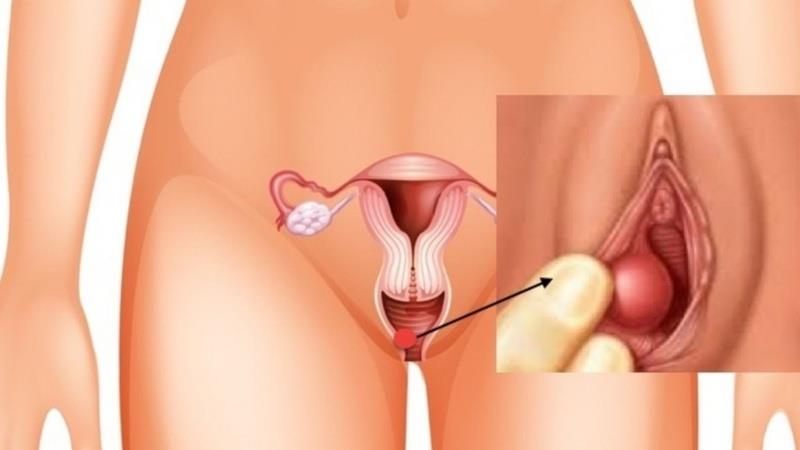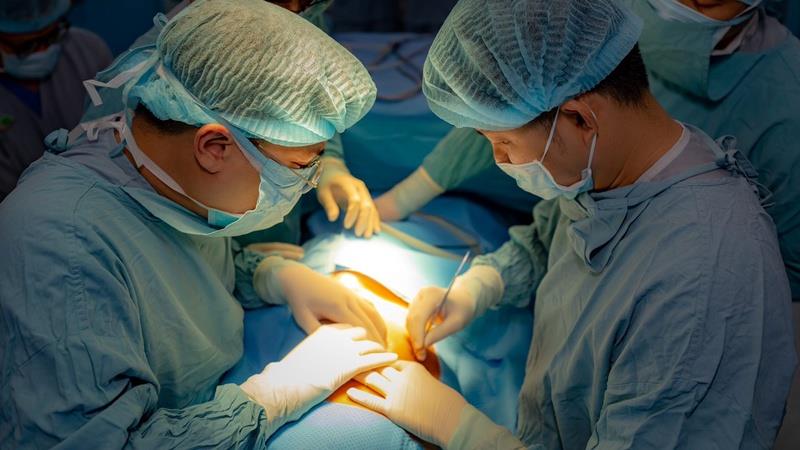What is clitoral hypertrophy? how to treat?

Clitoral hypertrophy in girls is a type of congenital anomaly of the external genitalia with the manifestation of the size of the clitoris being as large as the penis of boys, and even girls having a larger clitoris. In this article, we will explore the causes of clitoral hypertrophy as well as how to treat it properly.
When finding out that a girl has an enlarged clitoris, most parents are extremely worried. Therefore, early diagnosis and timely treatment will help girls completely become a girl with normal female genitals with normal morphology and function, without obstacles in marriage and childbearing. On the contrary, late diagnosis can lead to serious metabolic disorders, and also entail complex psychological and sexual problems later on.
What is clitoral hypertrophy?
As mentioned above, girls with clitoris hypertrophy will have a large and long clitoris that is almost the same as a boy's penis, even larger in some cases. This is classified as a type of birth defect of the external genitalia, called pseudo-hermaphrodite. The patient is female, carrying an XX chromosome , the gonads on both sides still have ovaries, uterus, and vagina, but the external genitalia are similar to those of men to varying degrees depending on the child.
 Clitoral hypertrophy in girls is a congenital malformation of the external genitalia.
Clitoral hypertrophy in girls is a congenital malformation of the external genitalia.
Birth defects in sex are currently divided into three categories:
- Pseudo-hermaphroditic male: The characteristic of this type of birth defect is that the child is genetically male, the sex chromosome is male, and there is a gene for testicular differentiation. However, the morphology of the external genitalia is similar to that of the female, (small penis, no testicles palpable). Bisexual male pseudo-female when ultrasound shows no uterus/ovaries.
- Pseudo-male bisexual female: Similar to the above defect, pseudo-male bisexual female will have female genetic characteristics, female sex chromosomes, but the morphology of the external genitals is similar to that of men (large penis, large penis, etc.) testicles are not palpable). This type of defect when laparoscopy shows both uterus and ovaries.
- True bisexuality: With this congenital sex defect, the child has genitals that cannot be identified as male or female. Ultrasound of this patient showed both testicular and ovarian tissue.
Causes of clitoral enlargement
Clitoral hypertrophy in girls is due to many different causes, specifically as follows:
- Congenital adrenal hyperplasia: This genetic condition causes the adrenal glands to make excess male hormones (androgens).
- Prenatal exposure to male hormones: During pregnancy, the mother takes certain drugs that contain male hormones or stimulate the production of male hormones. The fetus grows and becomes more masculine. The fetus in the womb can be exposed to excess male hormones if the mother has a disease or condition that causes a hormone imbalance.
- Tumor: This is a rare condition where the mother has a tumor that can increase the production of male hormones.
If you experience an enlarged clitoris, you may experience some of the following complications:
- Difficulty conceiving: Depending on the specific condition, people with clitoral hypertrophy can have children or not. For example, if the offspring inherit congenital adrenal hyperplasia, they can still get pregnant if they want.
- Increased risk of certain cancers : This is a worrisome complication of clitoral hypertrophy because certain disorders of sex development are associated with an increased risk of certain types of cancer.
Clitoral hypertrophy is a genetic disease, so it will not be able to be transmitted from an infected person to a healthy person.
Subjects at risk of clitoral hypertrophy
It should be said right away that clitoris hypertrophy is a genetic disease, so it will not be able to be transmitted from an infected person to a healthy person.
Family history contributes to the development of clitoral hypertrophy with the following possible risk factors:
- Families with unexplained infant deaths;
- Infertility , lack of menstruation or excessive facial hair in women;
- Genital abnormalities;
- Puberty has abnormal physical development;
- Congenital adrenal hyperplasia: This is a group of genetic disorders that affect the adrenal glands.
Prevention of clitoris hypertrophy
To prevent clitoral hypertrophy, pregnant women need to be closely monitored by obstetricians to:
- Early detection of abnormalities during pregnancy;
- Strictly manage the use of drugs, such as hormonal drugs;
- Detecting maternal disease risks can increase the risk of clitoral hypertrophy for the baby.
The doctor will determine the underlying cause to guide treatment and decide on the child's sex.
Diagnostic methods for clitoris hypertrophy
Usually, doctors and midwives will detect clitoral hypertrophy at the time of birth or soon after by noticing abnormalities in the newborn's genitals.
Determine the cause of clitoral hypertrophy
When detecting an infant with clitoral hypertrophy, doctors will determine the underlying cause to guide treatment and decide on the baby's sex. After going through questions about the mother's family history and health conditions, the doctor examines the child for testes and evaluates the child's external genitalia.
In addition, the doctor will need to perform additional tests such as:
- Blood tests that measure hormone levels;
- Blood tests that analyze chromosomes as well as genetic sex determination (XX or XY); or testing for single gene disorders;
- Ultrasound examination of the testicles, uterus, or vagina;
- X-rays clarify the anatomy;
- The minimally invasive surgery necessary to collect tissue samples of the newborn's reproductive organs may be performed.
Gender determination
From the test results collected, the doctor can accurately determine the sex of the child, then discuss with the family in determining the gender. Parents should be aware that, as children grow up, they will be the ones to make decisions about their own gender identity.
Treatments for clitoris hypertrophy
After sex selection, the patient will proceed with measures to treat clitoral hypertrophy. Because clitoris hypertrophy is not common and the treatment is quite complicated, it requires a team of highly qualified doctors.
 In some cases, surgery can be used to treat it.
In some cases, surgery can be used to treat it.
Medicine
Medication is one of the treatments for clitoris hypertrophy. The effect of hormonal drugs is to help correct or compensate for a hormonal imbalance.
Surgery to enlarge the clitoris
In some cases, surgical measures can be applied to treat and help children with clitoris hypertrophy to have normal sexual function, and at the same time reconstruct the genitals in accordance with the sex.
In girls with an enlarged clitoris, although it looks a bit like a male penis, the genitals can still function normally.
Continuity of care
Continuous monitoring and care of children with clitoris hypertrophy is extremely necessary to control the risk of complications as well as to screen for cancer until the child enters adulthood.
Hopefully, the above article has helped you find out what is clitoral hypertrophy and effective treatment measures. Early diagnosis and timely treatment will help children determine gender, avoiding complex psychological and gender problems later on.